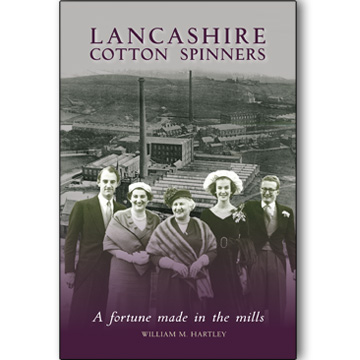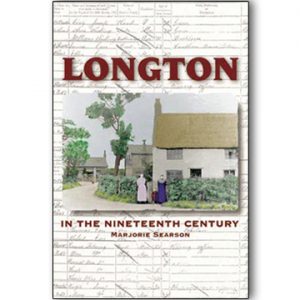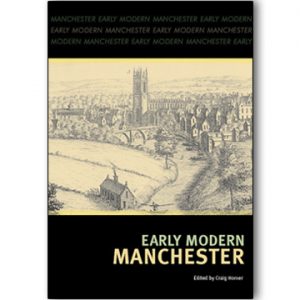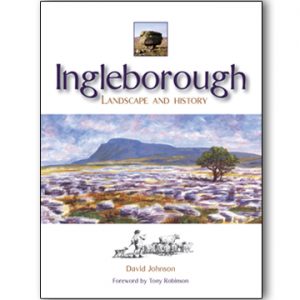Description
Lancashire Cotton Spinners, with its many interesting illustrations, will appeal to anyone interested in the history of the Lancashire cotton industry and the wealth of its families.
At the height of the cotton boom, Lancashire had everything going for it. Ample supplies of coal and copious amounts of water from nearby hills were available to power the huge mill engines. High rainfall created exactly the kind of damp atmosphere that was essential for spinning. An influx of people from rural areas ensured there was a ready workforce.
This well written account reveals how three families – the Mannocks, Prockters and Holdens – harnessed these resources in Oldham, Lancashire, and worked together to build a cotton fortune. Using a unique archive of letters found in the attic of a Holden descendent, William Hartley tells the behind-the-scenes story of how the families combined their financial and personal interests – including marriages into the important Stott and Gartside families – to create businesses that succeeded, and which survived longer than many which faltered as the cotton industry went into decline.
- Author: William M. Hartley
- Imprint: Palatine Books
- ISBN: 978-1-910837-06-1
- Binding: paperback
- Extent: 128 pages
- Format: 234mm x 156mm
- Illustrations: 75
- Pub date: 10.11.16







Anonymous –
At the height of the cotton boom, Lancashire had everything going for it. High rainfall created exactly the kind of damp atmosphere that was essential for spinning, and an influx of people from rural areas ensured there was a ready workforce.
The book Lancashire Cotton Spinners: A Fortune Made In The Mills tells how three families – the Mannocks, Prockters and Holdens – harnessed these resources in one part of the county and worked together to build a cotton fortune.
Using a unique archive of letters found in the attic of a Holden descendent, author and family historian William Mellodew Hartley tells the behind-the-scenes story of how the families combined their financial and personal interests – including marriages into the important Stott and Gartside families – to create businesses that succeeded, and which survived longer than many which faltered as the cotton industry went into decline.
Lancashire Cotton Spinners offers revealing insights into how brave decisions, strong characters, creative manoeuvring and pragmatism can combine to allow an enterprise to generate huge wealth and power.
Mr Hartley, who was born in Oldham, is a descendant of the famous Mellodews from Moorside, a family which manufactured velvet in the area. Although the mills are now demolished, the legacy of the Mellodew family can still be seen in Moorside today.
Author Mr Hartley began writing his latest book in 2009, when a descendant of the Holden family contacted him after finding letters in an attic. Some of the interesting details include a mystery surrounding a member of the Prockter family who wanted to be buried at St Margaret’s Church in Chapel Road, Hollinwood, and a model for Vogue who married one of the last members of the Holden family. He said: “It was a very small world, these cotton-spinning families. I hope people will enjoy it. It shows how families came from nothing to a very comfortable existence.”
Iram Ramzan, Oldham Evening Chronicle, February 2017
Iram Ramzan, Oldham Evening Chronicle, February 2017 –
At the height of the cotton boom, Lancashire had everything going for it. High rainfall created exactly the kind of damp atmosphere that was essential for spinning, and an influx of people from rural areas ensured there was a ready workforce.
The book Lancashire Cotton Spinners: A Fortune Made In The Mills tells how three families – the Mannocks, Prockters and Holdens – harnessed these resources in one part of the county and worked together to build a cotton fortune.
Using a unique archive of letters found in the attic of a Holden descendent, author and family historian William Mellodew Hartley tells the behind-the-scenes story of how the families combined their financial and personal interests – including marriages into the important Stott and Gartside families – to create businesses that succeeded, and which survived longer than many which faltered as the cotton industry went into decline.
Lancashire Cotton Spinners offers revealing insights into how brave decisions, strong characters, creative manoeuvring and pragmatism can combine to allow an enterprise to generate huge wealth and power.
Mr Hartley, who was born in Oldham, is a descendant of the famous Mellodews from Moorside, a family which manufactured velvet in the area. Although the mills are now demolished, the legacy of the Mellodew family can still be seen in Moorside today.
Author Mr Hartley began writing his latest book in 2009, when a descendant of the Holden family contacted him after finding letters in an attic. Some of the interesting details include a mystery surrounding a member of the Prockter family who wanted to be buried at St Margaret’s Church in Chapel Road, Hollinwood, and a model for Vogue who married one of the last members of the Holden family. He said: “It was a very small world, these cotton-spinning families. I hope people will enjoy it. It shows how families came from nothing to a very comfortable existence.”
Iram Ramzan, Oldham Evening Chronicle, February 2017
Dr Jack Southern –
The social history of Lancashire’s cotton towns has had renewed interest recently. Here,
it forms the backdrop for Hartley’s study of three families, the Mannocks, Prockters,
and Holdens, and their entwined fortunes in Oldham cotton spinning. Based on family
records, Lancashire Cotton Spinners is thus of great interest for those seeking to examine
the impact of the rise and fall of British textiles via the prism of familial case study.
The book covers the period c. 1825–1960s, although a helpful postscript continues
with later legacies. As the author suggests, there are elements of the ‘unremarkable’ in
studying the families of Lancashire cotton owners, but this study of networks, business
and economic change in a major industrial northern town, is a welcome addition to
the literature.
The chapters follow a rough chronological order, focussing at first on key figures to
develop the narrative, and becoming broader later. It is in the latter sections where the
strengths of the book are clearer, and where a wider range of sources allows for both
context and deeper analysis. The period after the Second World War, discussed primarily
in chapters 9–13, is of special interest in revealing the human reactions to the decline of
cotton. Perhaps more discussion on the inter-war period would have helped to provide
more context to this.
The chapter lengths are somewhat frustrating at times, as they do not always offer
scope for in-depth analysis. This is especially the case with some of the earlier sections.
Further discussion and analysis of Oldham, its areas and the local economy could have
added context to some of the key years in the textile industry’s history. Similarly, analysis
of the mills and indeed the operatives is sparse. On p. 92, for example, the discussion of
how operatives dealt with the 1965 Redundancy Payment Act could have also considered
the impact on the local community. However, several of the chapters, 9 for example,
manage to combine the family histories with the wider story of changes in the industry
with more success. The chronology is occasionally unclear, particularly in chapter 11,
and some irrelevant information detracts from the overall argument, although this is a
minor gripe.
A helpful family tree, glossary of terms, and discussion of the value of money are
included, as are two appendices. The 69 illustrations include primary sources and images.
It is clear that Hartley has done a great deal of research both in public and family
archives, as well as talking to relations of the families involved. As a book, it is not aimed
at academic audiences, yet is of interest to scholars seeking to personalise the fortunes
of British textiles and will clearly have interest to local and family historians. It offers
an interesting, if sometimes frustrating, case study of individual and familial networks,
from the foundation to the aftermath of the businesses.
Dr Jack Southern, Transactions of the Historic Society of Lancashire & Cheshire, vol 168 (2019).